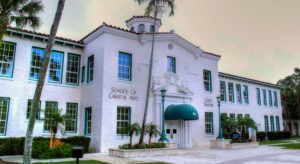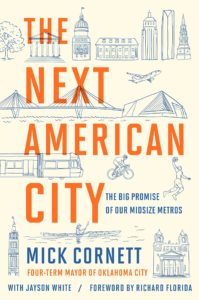
There’s a darkness in the center of town.
It’s been said that placemaking done right builds on “the soul” of a place.
I like that sentiment.
Too often, we think of placemaking as construction when it’s really about storytelling.
I believe that every place has a story to tell and that our job as citizens is to honor that story.
If we do, we will be good stewards of our communities and we will make sure that change—which is inevitable—will be authentic and feel good. But if we don’t, we will lose our soul and the essence of what makes a place special.
Losing what’s special about a place, doesn’t happen overnight, but it will happen. If we keep pulling threads, eventually the garment falls apart.
I believe that good design helps build great places, but that’s only one piece of the puzzle.
The other part—the most important part— is the people equation.
A great place must be “people friendly.” It must be warm and inviting and above all it must be respectful of its past, mindful of its present and always thinking about the future.
Those thoughts hit me when I drive past a still vacant Old School Square on my way to work in the morning.
To me, those beautiful buildings—once bustling with activity—seem sad and lonely. The Crest Theatre, home to so many magical performances over the years, is now an abandoned construction site. The classrooms once the home of art and photography classes are empty. The newly renovated Cornell Museum has had its walls stripped of art.
It didn’t have to be this way, but that’s a whole other story.
Meanwhile, The Downtown Development Authority is poised to come in and pump some life into the grounds and I have no doubt that if given ample resources, they will.
But as good as that agency is—and I’ve been a supporter over the years—I don’t think it will be easy to replace the soul of Old School Square. And as Billy Joel sings: “it’s all about soul.”
Old School Square’s soul was embodied by the special people who gave their time, passion, love, and hard-earned money to that place on the corner of Atlantic and Swinton for 32 years before the City Commission on a 3-2 vote kicked them to the curb. The public had no opportunity to weigh in before the vote, because the item to terminate the lease was never on an agenda.
But I suspect, based on the thousands of people who signed a petition to reverse the decision, that the community would have asked the commission to stop. Sadly, that never happened.
For 14 long months, there have been clumsy efforts to replace the non-profit that created Old School Square. But that’s not proving to be so easy. And I know why: you can’t dial up soul.
You can’t issue an RFP and ask a group to bring love and passion as well as operating chops and tons of money. That’s what we’ve lost–love, passion and 80 percent of a $3 million operating budget. And it’s not a one time loss. It will be felt every year until you find a way to bring the soul back to what was Delray’s signature civic project.
Into that vacuum, comes the DDA. They are taking on a difficult and expensive assignment.
Again, I support the agency. When I was an elected official, and the downtown was humming, I would get occasional calls from citizens who wanted to disband the taxing authority.
“We don’t need the DDA anymore,” they would declare. “The downtown is busy. Their job is done.”
I would disagree, because the first rule of success in life, business, cities, and downtowns is this: you are never done.
Complacency is a killer.
Just when you think you’ve got it made, life will remind you that you don’t.
So, for the record, I hope the DDA succeeds.
But I will always believe that the Commission’s decision to terminate Old School Square, the very creators of the concept, was a tragically bad one. Costly in so many ways and while the politicians mercifully come and go, you the taxpayer will be saddled with those costs for years to come.
The biggest cost is the people who were thrown to the curb. They were awfully good folks—as good as it gets. Contributors who were generous and passionate about their town who were, in the end, told to get lost. People who ought to know better but don’t are lying about them and when they do they reveal who they really are.
That’s tragic and hurtful. And it matters. More than dollars and cents.
My friends, it’s the people who provide the magic.
It’s the people who provide the soul of a place.
People and only people can animate a brand, a community, a non-profit, a neighborhood.
So, it’s not about plugging in another entity or designing a great looking space. Of course, the entity is important and the space as is well, but it’s who comes/volunteers (and stays) at the table and who replaces them when they move on that matters most.
There was a time when our city government had multiple “connection” or entry points. There were Citizen Police Academies, there were Resident Academies, a Youth Council and more charrettes and more visioning exercises than you could count.
Old School Square was the heart and soul of those efforts to connect us.
It was a place to gather and celebrate our history, discuss our present and plan our future.
Old School Square was the physical and spiritual embodiment of our community. And it was wiped out without notice, forethought, or empathy.
I would be the last person to argue that what we lost was perfect. But Old School Square was good and there were times when it was great.
And that’s why you work to make it better. You don’t throw it away. You don’t kick it to the curb and then flail around asking the Boca Museum to help you (think about that for a moment, call on a Boca institution to run our community’s cultural center? Come on, folks) before resting on the DDA.
The DDA has promised to enlist volunteers and engage stakeholders as they embark on this new task. They are even suggesting the creation of a non-profit so they can solicit donations. Hmm….sounds familiar. It sounds like Old School Square.
All that is fine, but I also hope they take some time to heal some deep wounds. Reach out to some of the people who loved Old School Square. Reach out to the woman who gave it life: Frances Bourque.
I know that won’t be a popular move with some of the powers that be. So what? It’s the right thing to do.
A warm gesture would be good for the soul.
And what’s good for the soul is good for the town.








